Abarth 500 595 695 vs VW ID.3 – Differences & prices compared
Both models have their strengths – but which one suits you more?
Compare performance, efficiency, price and space directly: Abarth 500 595 695 or VW ID.3?
Costs and Efficiency:
Looking at overall running costs, both models reveal some interesting differences in everyday economy.
VW ID.3 has a slightly advantage in terms of price – it starts at 28600 £, while the Abarth 500 595 695 costs 32600 £. That’s a price difference of around 3994 £.
In terms of energy consumption, the advantage goes to the VW ID.3: with 14.50 kWh per 100 km, it’s slightly more efficient than the Abarth 500 595 695 with 17.10 kWh. That’s a difference of about 2.60 kWh.
As for range, the VW ID.3 performs convincingly better – achieving up to 605 km, about 340 km more than the Abarth 500 595 695.
Engine and Performance:
Power, torque and acceleration say a lot about how a car feels on the road. This is where you see which model delivers more driving dynamics.
When it comes to engine power, the VW ID.3 has a decisively edge – offering 326 HP compared to 155 HP. That’s roughly 171 HP more horsepower.
In acceleration from 0 to 100 km/h, the VW ID.3 is distinct quicker – completing the sprint in 5.70 s, while the Abarth 500 595 695 takes 7 s. That’s about 1.30 s faster.
In terms of top speed, the VW ID.3 performs evident better – reaching 200 km/h, while the Abarth 500 595 695 tops out at 155 km/h. The difference is around 45 km/h.
There’s also a difference in torque: VW ID.3 pulls significantly stronger with 545 Nm compared to 235 Nm. That’s about 310 Nm difference.
Space and Everyday Use:
Cabin size, boot volume and payload all play a role in everyday practicality. Here, comfort and flexibility make the difference.
Seats: VW ID.3 offers somewhat more seating capacity – 5 vs 4.
In curb weight, Abarth 500 595 695 is distinct lighter – 1410 kg compared to 1787 kg. The difference is around 377 kg.
In terms of boot space, the VW ID.3 offers convincingly more room – 385 L compared to 185 L. That’s a difference of about 200 L.
In maximum load capacity, the VW ID.3 performs convincingly better – up to 1267 L, which is about 717 L more than the Abarth 500 595 695.
When it comes to payload, VW ID.3 a bit takes the win – 473 kg compared to 385 kg. That’s a difference of about 88 kg.
Who wins the race?
The VW ID.3 proves to be dominates this comparison and therefore becomes our DriveDuel Champion!
VW ID.3 is the better all-rounder in this comparison.
 @ Volkswagen AG / VW Media
@ Volkswagen AG / VW Media
VW ID.3
Abarth 500 595 695
The Abarth 500, particularly in its 595 and 695 renditions, captures the spirit of Italian motoring with its compact yet aggressive design. Known for its lively performance and distinctive styling, this little powerhouse is a joy to drive, offering an engaging experience that appeals to enthusiasts. With its rich motorsport heritage, the Abarth 500 embodies the essence of fun and excitement on both the streets and the race track.
details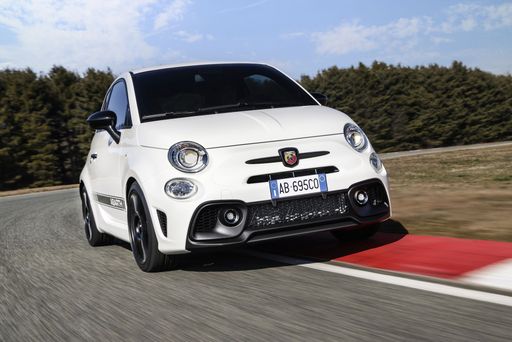 @ Abarth / Stellantis Media
@ Abarth / Stellantis Media
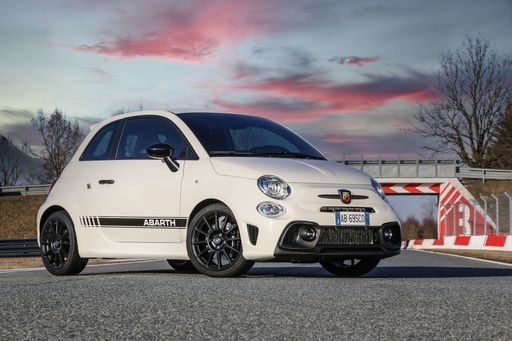 @ Abarth / Stellantis Media
@ Abarth / Stellantis Media
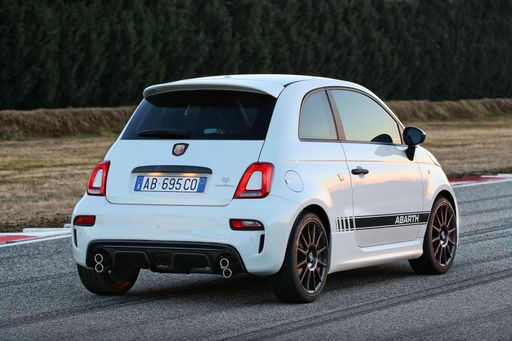 @ Abarth / Stellantis Media
@ Abarth / Stellantis Media
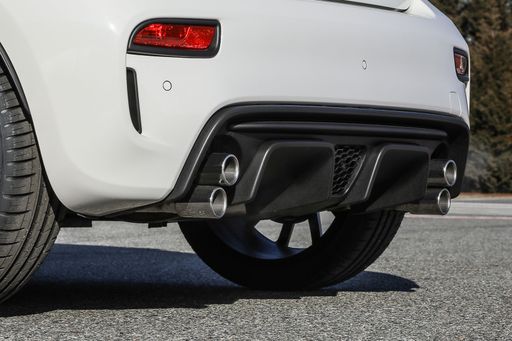 @ Abarth / Stellantis Media
@ Abarth / Stellantis Media
 @ Abarth / Stellantis Media
@ Abarth / Stellantis Media
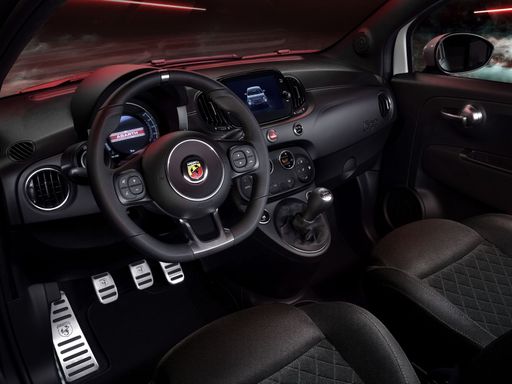 @ Abarth / Stellantis Media
@ Abarth / Stellantis Media
VW ID.3
The VW ID.3 represents Volkswagen's entry into the world of electric vehicles, offering a modern design that combines functionality with sustainability. Inside, you'll find a spacious and tech-forward interior, providing a comfortable driving experience while maintaining a focus on environmentally friendly materials. The ID.3's performance delivers a smooth and responsive feel on the road, making it a strong contender in the growing electric car market.
details @ Volkswagen AG / VW Media
@ Volkswagen AG / VW Media
 @ Volkswagen AG / VW Media
@ Volkswagen AG / VW Media
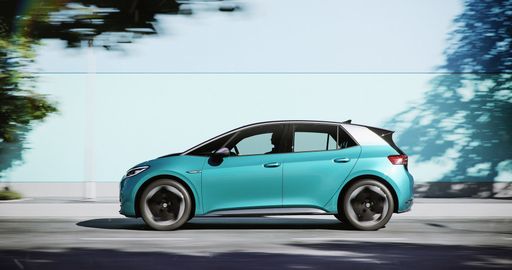 @ Volkswagen AG / VW Media
@ Volkswagen AG / VW Media
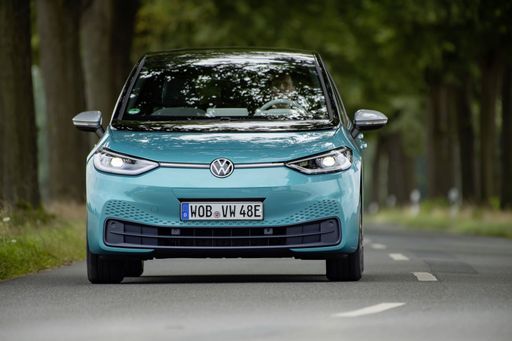 @ Volkswagen AG / VW Media
@ Volkswagen AG / VW Media
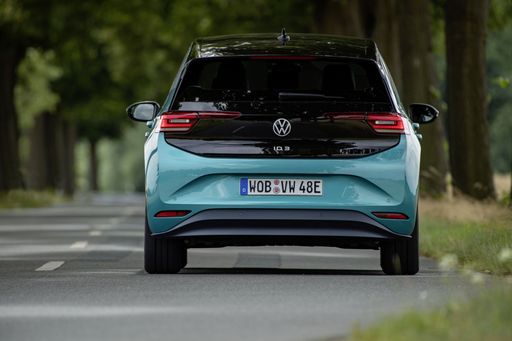 @ Volkswagen AG / VW Media
@ Volkswagen AG / VW Media
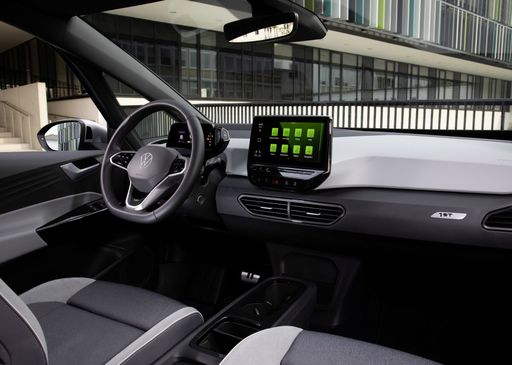 @ Volkswagen AG / VW Media
@ Volkswagen AG / VW Media
 @ Volkswagen AG / VW Media
@ Volkswagen AG / VW Media
 @ Abarth / Stellantis Media
@ Abarth / Stellantis Media
|
 @ Volkswagen AG / VW Media
@ Volkswagen AG / VW Media
|
|
|
|
Costs and Consumption |
|
|---|---|
|
Price
32600 - 39400 £
|
Price
28600 - 49300 £
|
|
Consumption L/100km
-
|
Consumption L/100km
-
|
|
Consumption kWh/100km
17.1 - 18.8 kWh
|
Consumption kWh/100km
14.5 - 15.8 kWh
|
|
Electric Range
242 - 265 km
|
Electric Range
383 - 605 km
|
|
Battery Capacity
37.80 kWh
|
Battery Capacity
52 - 79 kWh
|
|
co2
0 g/km
|
co2
0 g/km
|
|
Fuel tank capacity
-
|
Fuel tank capacity
-
|
Dimensions and Body |
|
|---|---|
|
Body Type
Hatchback
|
Body Type
Hatchback
|
|
Seats
4
|
Seats
5
|
|
Doors
3
|
Doors
5
|
|
Curb weight
1410 - 1435 kg
|
Curb weight
1787 - 1993 kg
|
|
Trunk capacity
185 L
|
Trunk capacity
385 L
|
|
Length
3673 mm
|
Length
4264 mm
|
|
Width
1682 mm
|
Width
1809 mm
|
|
Height
1518 mm
|
Height
1564 mm
|
|
Max trunk capacity
550 L
|
Max trunk capacity
1267 L
|
|
Payload
370 - 385 kg
|
Payload
437 - 473 kg
|
Engine and Performance |
|
|---|---|
|
Engine Type
Electric
|
Engine Type
Electric
|
|
Transmission
Automatic
|
Transmission
Automatic
|
|
Transmission Detail
-
|
Transmission Detail
Reduction Gearbox
|
|
Drive Type
Front-Wheel Drive
|
Drive Type
Rear-Wheel Drive
|
|
Power HP
155 HP
|
Power HP
170 - 326 HP
|
|
Acceleration 0-100km/h
7 s
|
Acceleration 0-100km/h
5.7 - 8.2 s
|
|
Max Speed
155 km/h
|
Max Speed
160 - 200 km/h
|
|
Torque
235 Nm
|
Torque
310 - 545 Nm
|
|
Number of Cylinders
-
|
Number of Cylinders
-
|
|
Power kW
114 kW
|
Power kW
125 - 240 kW
|
|
Engine capacity
-
|
Engine capacity
-
|
General |
|
|---|---|
|
Model Year
2023
|
Model Year
2024 - 2025
|
|
CO2 Efficiency Class
A
|
CO2 Efficiency Class
A
|
|
Brand
Abarth
|
Brand
VW
|
Is the Abarth 500 595 695 offered with different drivetrains?
The Abarth 500 595 695 is offered with Front-Wheel Drive.
The prices and data displayed are estimates based on German list prices and may vary by country. This information is not legally binding.
